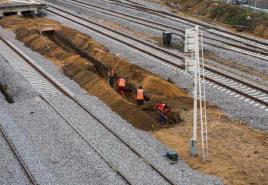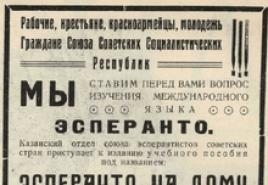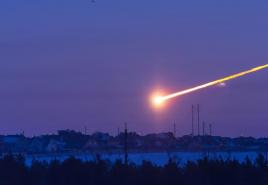Where does the Queen of Great Britain live in which palace? Queen Elizabeth II of Great Britain
In London, in the family of the Duke and Duchess of York.
Queen Elizabeth usually celebrates her real birthday in the family circle, while the official birthday of the monarch in the UK is celebrated in June with a colorful military parade in central London.
According to the tradition established at the beginning of the 20th century by King Edward VII, the monarch’s birthday is celebrated in Great Britain on one of the Saturdays of June, depending on the weather (the king chose this date because the weather in June cannot spoil the national holiday).
Princess Elizabeth Alexandra Mary Windsor (Elizabeth Alexandra Mary Windsor), as the future queen was named at birth, is from the Windsor dynasty. She is the eldest daughter of the Duke of York George, the future King George VI of Great Britain (1895-1952) and Lady Elizabeth Bowes-Lyon (1900-2002).
Elizabeth received a good education at home, in addition to the usual school subjects, she was taught the basics of economics, jurisprudence and constitutional law. The curriculum also included lessons in horseback riding, dancing and music. Her mother introduced her to palace etiquette.
After the abdication of her uncle, King Edward VIII, and her father's accession to the throne in December 1936, 10-year-old Elizabeth became heir to the British throne and moved with her parents from Kensington to Buckingham Palace.
In preparation for political life, the future queen began attending constitutional history classes at Eton College.
At the outbreak of war in 1939 they were evacuated to Windsor Palace.
During World War II, Elizabeth insisted that her parents let her go to military service. She mastered the profession of a driver in a military transport training center, having received the qualification of a truck driver, learned how to change tires on a truck, disassemble and assemble a motor.
In 1945, Elizabeth worked in the Reserve Women's Territorial Services (Women's Auxiliary Territorial Service), where she ended the war with the rank of junior commander.
Elizabeth's close acquaintance with royal duties began in 1944, when she became a member of the Council of State and began to get involved in business, replacing George VI when he went on a trip to the fronts.
On February 6, 1952, King George VI died of a lung disease, and Elizabeth, who was at that time with her husband on vacation in Kenya, was declared Queen of Great Britain on the same day.
However, the official coronation ceremony of Elizabeth in Westminster Abbey in London took place only a year later, on June 2, 1953.
© Photo: Victoria and Albert Museum, LondonQueen Elizabeth II on her coronation day 2 June 1953. Photo from the exhibition "Royal Photography by Cecil Beaton"
© Photo: Victoria and Albert Museum, London
Since that time, she has been Queen Elizabeth II, head of state of the United Kingdom of Great Britain and Northern Ireland, is also the queen of 15 Commonwealth states (Australia, Antigua and Barbuda, Bahamas, Barbados, Belize, Grenada, Canada, New Zealand, Papua New Guinea, Saint Vincent and the Grenadines, Saint Kitts and Nevis, Saint Lucia, Solomon Islands, Tuvalu, Jamaica), Head of the Anglican Church, Commander-in-Chief of the Armed Forces and Lord of the Isle of Man. She was also Queen of South Africa from 29 May 1953 to 31 May 1961. In 1999, Australia put the status of the queen to a referendum, but the Australians preferred to keep her nominal status as head of state.
On November 20, 1947, Elizabeth married her distant relative, who, like her, is the great-great-grandson of Queen Victoria - Prince Philip Mountbatten, son of the Greek Prince Andrew, who was then an officer in the British Navy. She met him at the age of 13, when Philip was still a cadet at the Dortmouth Naval School. Becoming her husband, Philip received the title of Duke of Edinburgh.
In November 2007, the Queen and her husband the Duke of Edinburgh celebrated their "diamond wedding" - the sixtieth anniversary of their marriage. For the sake of such an occasion, the Queen allowed herself a little liberties - for one day they retired with her husband for romantic memories in Malta, where Prince Philip once served, and the young Princess Elizabeth visited him.
On December 29, 2010, Elizabeth II became a great-grandmother for the first time. On this day, her eldest grandson, Princess Anne's eldest son Peter Phillips, and his Canadian wife, Autumn Kelly, had a daughter. The girl became 12th in the British line of succession.
In 2006, Buckingham Palace released 80 fascinating facts from the life of Queen Elizabeth II of Great Britain, thanks to which it became known that the Queen is fond of photography, loves to take pictures of her family members. In 1997, the Queen launched the first ever website of the British monarchy.
Since her youth, Elizabeth II has been a fan of the corgi, a noble hunting breed, several of which constantly accompany her on vacation. The Queen also introduced a new breed of dog, the Dorgi.
The Queen's other passion is horses and horse racing. She is a good rider herself and every year she watches the main competitions with interest, and also breeds horses in her stables.
The Queen speaks fluent French and does not need an interpreter during visits and audiences with representatives of Francophone countries.
Elizabeth is the oldest monarch in the history of Great Britain by age, but the record for the duration of the reign, set by Queen Victoria, who ruled for 63 years and seven months, is still only for her. To do this, she needs to stay on the throne until at least September 9, 2015.
In 2012, in honor of the 60th anniversary of the reign of Queen Elizabeth II, the famous Big Ben clock tower near the British Parliament building in London was officially.
The material was prepared on the basis of information from RIA Novosti and open sources
In the section on the question Where does Queen Elizabeth II live? given by the author Caucasian the best answer is Initially, the kings of Great Britain occupied the Palace of Westminster, which was built in an existing abbey specifically for the monarchs.
Then the British kings changed many palaces. Buckingham Palace, where the Queen of Great Britain lives in our time, became the residence of kings in 1837 when Queen Victoria came to the throne. Previously, the palace belonged to the Duke of Buckingham, but in 1762 it was bought by George III, who was no longer satisfied with St. James's Palace located nearby in the center of London. Until the accession of Queen Victoria, the palace was being completed, as a result, a regular square of four combined buildings was formed, in the center of which there is a beautiful courtyard. But this is not the only residence of the British monarchs.
In the city of Windsor, where the Queen of Great Britain lives in the summer and during visits to this city, where important political meetings take place, Windsor Castle is located. This castle became known to the whole world in June 2008, when President Bush's helicopter landed on one of the well-groomed lawns, which Queen Elizabeth II was very unhappy with.
The Queen and other members of the royal family continue to spend most of their free time. The castle remains an important meeting place during ceremonial visits of foreign heads of state. Its luxurious interiors are decorated with the most outstanding paintings and works of art from the royal collection. 
The most famous castle in all of Scotland, although not the oldest, of course, is Balmoral Castle, the summer residence of the English royal family since the time of Queen Victoria. During the rest of the year, when the royal family does not live in the castle, it is open to visitors. 

Where does Elizabeth II live? As befits queens, Elizabeth lives in a castle. Balmoral Castle, one of the residences of the British Queen, is located in Aberdeenshire, Scotland, near the village of Crathie, 6.2 miles (10.0 km). In 1852, the castle was purchased by Queen Victoria and her husband, Prince Albert.
Immediately after the purchase of Balmoral Castle, it turned out that the building was too small for the king and had to be dismantled. On the vacant site, the Scottish architect William Smith built a new castle in 1856, which has largely survived to this day.
The castle is the private property of the Queen and is not part of the Crown Estate.
Crown Estate - real estate owned and inherited by the royal family with some ownership restrictions. The Queen does not have the right to sell property from the list of the Crown Estate, and the income from the operation of this property goes to the state budget.
In 1760, King George III transferred part of his castles to the state, and in return received debt forgiveness and relieved himself of responsibility for the repair and maintenance of the property. This was the beginning of the formation of a huge Crown Estate real estate fund, the total value of which exceeds a billion pounds.
In turn, the state, from the income from the operation of royal palaces and residences, formed an annual grant for members of the royal family, known as the Civil List.
In the United Kingdom, the Civil List covers the royal family's expenses for official visits to foreign and Commonwealth countries, as well as for ceremonial functions, festivities, maintenance royal residences and the cost of wages serving the Queen's staff. In addition, additional state grants are allocated for the costs of ensuring the security of the royal family.
Queen Elizabeth II with her corgi dogs.

Now Balmoral is a huge estate of 49,000 acres (20,000 ha), which includes hunting grounds where herds of wild deer graze and many different species of game and birds live, including black grouse, which are traditionally arranged for royal hunting.

Cattle are also grown on these lands, several forestry facilities are equipped.
Inside Balmoral Castle.
In the main drawing room of Balmoral Castle, where Queen Elizabeth II receives guests, the atmosphere is simple and rather modest.
In British tradition, more of a poor folk tradition, against the backdrop of an antique fireplace and rare antique Japy Freres clocks, a cheap electric radiator from a local hardware store. Worn-out furniture in covers, children's toys scattered all over the living room, and if it weren't for the portraits of royalty on the walls, one would think that we were in one of the ordinary English aristocratic houses.

Queen Elizabeth II in the drawing room of Balmoral Castle. A rare opportunity to see Her Majesty in a relaxed home environment. Opposite the former prime minister of Scotland.
We marked the most interesting details of the royal living room with numbers.
1. Portrait of the young Queen Victoria, by the Hungarian painter Charles Brocky, 1841. Queen Victoria is the great-great-grandmother of Queen Elizabeth II.
2. Portrait of a young Prince Albert, by the same artist. The prince died in 1861 at the age of 42.
3. Princess Eugenie and Princess Beatrice.
4. The Duke and Duchess of Cambridge (Kate and Prince William) with their son Prince George, born in July this year.
5. Favorite royal dogs of the Corgi breed sleep here.
6. Soft toys for little Prince George, the Queen's great-grandson.
7. Instead of an old fireplace, an electric heater works for 28 pounds.
8. Royal carpet (Royal Tartan). Traditional national Scottish pattern, crossed horizontal and vertical stripes different colors. Tartan is made from natural sheep wool.
Published: March 20, 2013 at 01:15Queen of England- another iconic symbol of London. British Queen Elizabeth 2 has been on the throne for over sixty years.
During this time, the map of the planet changed many times, states appeared and disappeared, coups, revolutions and wars took place, and Her Royal Majesty Elizabeth 2 personified stability and sustainable development their country, Great Britain.
Neither fascism, nor communism, nor any form of extremism has gone through here. Great Britain and her queen were, are and always will be.
And although the great imperial times are long gone, the glory of Britain does not fade, the country is developing, its standard of living has been and remains one of the highest in the world, and millions of subjects love Queen Elizabeth of England. The recently magnificently celebrated diamond anniversary of her reign - the sixtieth anniversary - is direct evidence of this.
was bornElizabeth Alexandra Mary(full name of Queen Elizabeth 2) April 21, 1926 in a London area that remains wealthy and aristocratic to this day. The house where the future queen was born, unfortunately, has not been preserved, but even today, wandering through the streets near Berkeley Square and Brewton Street, it is quite possible to feel the spirit of the glorious Windsor past.
In 1947, Princess Elizabeth got married for Lieutenant of the British Navy Philippa Mountbatten, a member of several royal families in Europe, the great-grandson of three monarchs, including the Russian Emperor Nicholas 2. The queen had the only younger sister, Princess Margaret (1930 - 2002).
Elizabeth became British monarch February 6, 1952 after the death of his father George 6. The coronation took place June 2, 1953 in Westminster Abbey.
During this time, together with her, the country was ruled by more than a dozen prime ministers and several thousand deputies of the House of Lords and the House of Commons. Queen Elizabeth 2 experienced both sad and joyful moments in the history of the country, crises, wars, the Olympics, the World and European Football Championships, the flight of the British into space and much, much more.
 The Queen of Great Britain lives in, in the very center of London.
The Queen of Great Britain lives in, in the very center of London.
The palace is closed to visitors. Only a few of its halls open to tourists in the summer, when Her Royal Majesty leaves for one of her country residences.
During normal times, country residences are open to the public, unlike Buckingham Palace.
One of the most interesting country residences of the Queen is the Palace with a huge garden, located in.
It's 20 miles east of London.
The Queen and her husband Philip, Duke of Edinburgh have four children. Queen Elizabeth's Children 2: The Prince Charles, a princess Anna, prince Andrew and prince Edward.
The image of Queen Elizabeth II and the English monarchy as a whole appears in London at every turn - in souvenirs, in the names of streets, squares, theaters and pubs, in street advertising, and it seems even in the very air of London.






